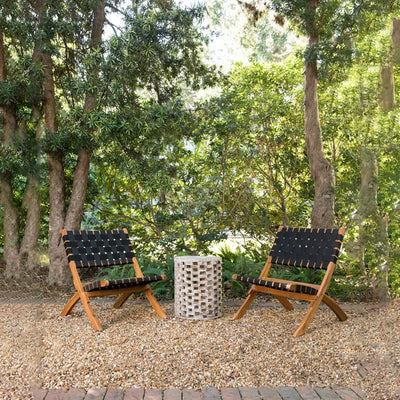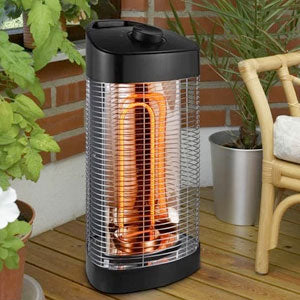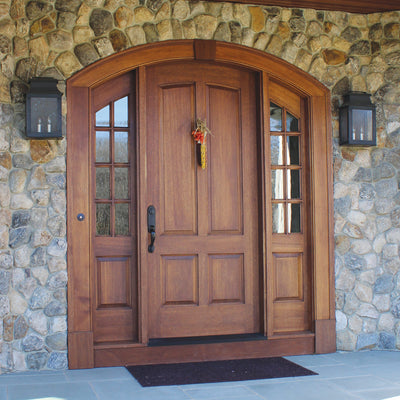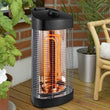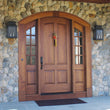Buying Guide
A Comprehensive Guide to Buying a Fire Pit
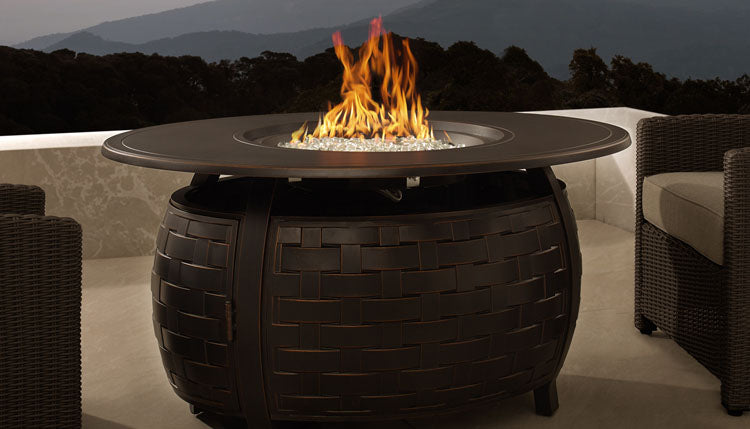
A wood or propane fire pit in your backyard creates an outdoor destination to gather with friends and family over warm, cozy flames for conversation, laughter, food, and relaxation. Consult our guidelines to learn all about fire pits, from the types, shapes, and materials available, to fuel options, placement, and safety tips, and then choose the best fire pit for your outdoor space.
What are the different types of fire pits?
Fire pits come in standard configurations (usually round), in bowl-shaped styles, in portable options, and integrated into outdoor furniture. The chiminea is another type of fire pit, typically in a narrower, more upright shape and featuring a chimney flue. Explore all the options to determine which type is right for you.

Standard Fire Pit
A standard or classic fire pit is the most recognizable type. This large design is typically round or rectangular and creates a focal point in your backyard. A standard fire pit is ideal for an outdoor area with plenty of space.
Folding Fire Pit
Where space is limited, a folding fire pit is a smart choice. The best folding fire pits are lightweight, durable, and include a carrying bag for easy transport and storage. Their design and features make them suitable to use on a balcony, deck, or in a small backyard.
Fire Pit Bowl
A fire pit bowl makes a dramatic centerpiece for entertaining outdoors, and its relatively small size makes it portable. The legs on a fire pit bowl make it suitable to use on a table or on the ground. Fire pit bowls are typically wood-burning and easy to clean.
Fire Pit Table
Fire pit tables run the gamut in size from small side tables to full patio dining sets. With the fire pit integrated into the furniture, these units add drama to your outdoor entertaining and make it fun to serve cocktails or a full meal around the light of flickering flames.
Pro Tip: Most fire pit tables are heavy, so choose a permanent spot before setup.

Chimineas
If you prefer a narrower design, a chiminea—French for chimney—is a good choice. A chiminea offers more warmth than a standard fire pit, and keeps the flames contained inside. If you have pets or young children, a chiminea with protective screening is the best option.
Consider a fire pit ring. If you plan to install your fire pit in a permanent spot, we recommend adding a compact, heavy-duty fire pit ring. Also known as campfire rings, these fire-pit accessories rest directly on the ground and prevent flames from spreading out beyond the edges.
What is the best material for a fire pit?
There is no single material that’s best for a fire pit. Choose a material that’s low maintenance, attractive, and will enhance the longevity of your fire pit.
- Steel: Durable steel fire pits often come finished in a powder coat that provides rust protection. Steel fire pits are also relatively lightweight for easy repositioning.
- Aluminum: Lightweight, rust-resistant, and durable, an aluminum fire pit is a low-maintenance option ideal for a humid, dry, or wet climate.
- Concrete: Solid, durable, and weather-resistant, concrete is one of the heaviest materials for a fire pit.
- Copper: A popular metal for fire pits, copper is durable, rust-resistant, and develops an attractive green patina over time.
Note: If you prefer a copper fire pit to retain its original burnished color, continual maintenance is required.
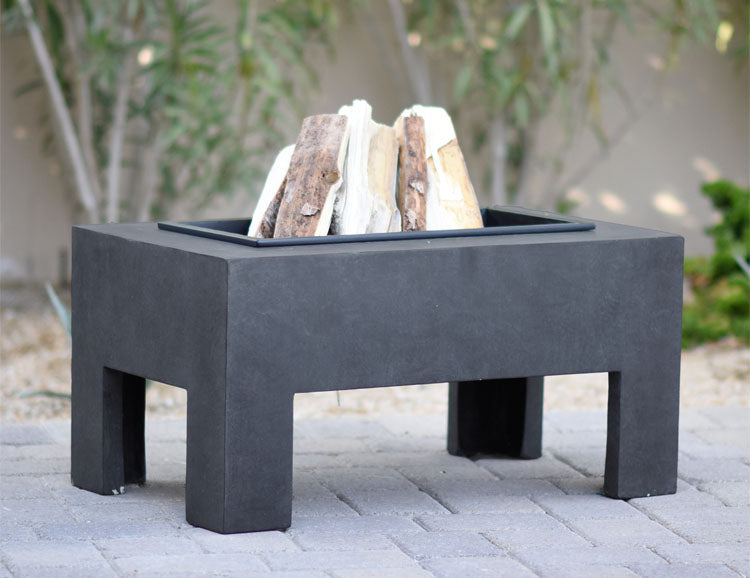
Common Fire Pit Shapes
Though fire pits come in a variety of shapes, the three most common are round, square, and rectangular. Choose the fire pit shape that best suits your space and your outdoor décor.
Round fire pits – Shaped like a classic campfire, a round fire pit imparts a timeless look to backyard décor. Add some outdoor chairs around the fire pit and create a marshmallow-roasting conversation spot for friends and family.
Square fire pits – Imitate the straight lines of your home’s architecture with a square fire pit. This shape fits well in a small backyard space; add seating around a square fire pit for late-night conversations and happy hour celebrations.
Rectangular fire pits – Use a rectangular fire pit on a large patio where there is plenty of space for oversize chairs, outdoor benches, or loveseats for lounging and relaxing.
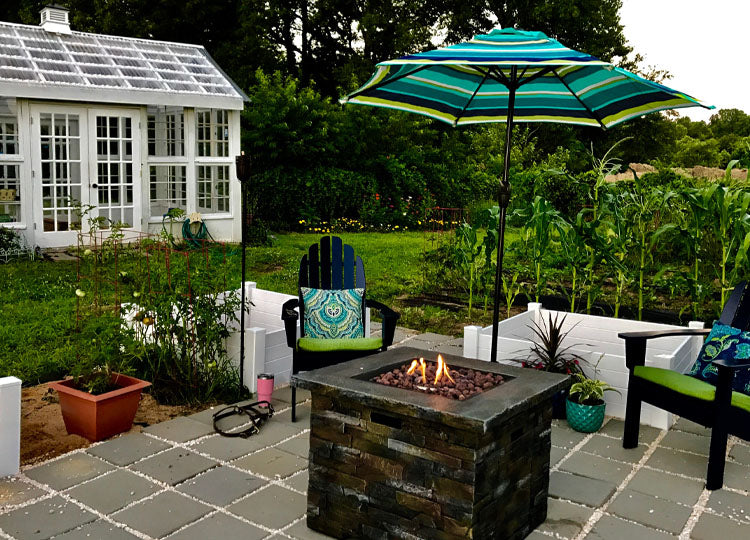
Differences Between Wood & Propane Fire Pits
Most fire pits are fueled by wood or propane. Although each of these fire pit types is similar in design and purpose, there are slight differences between them.
Attributes of Wood-Burning Fire Pits:
- Usually lightweight
- Yield larger flames and higher heat
- Produce a traditional smoky aroma
- Evoke the nostalgic beauty of a classic campfire
Attributes of Propane Gas Fire Pits:
- Easier to clean
- Can be customized
- Convenient, quick ignition
- Produce smaller flames and little odor
Fire Pit Location & Safety
After you choose a fire pit, find the best location for optimal safety and comfort. Follow these helpful tips:
- Never use a fire pit inside
- Don’t leave the fire pit unattended
- Keep the fire pit at least 10 feet away from trees, bushes, debris, or structures
- Contact your city about rules regarding fire pit placement in a backyard
- Don’t leave children or pets alone by the open fire
- Extinguish the fire pit when you finish using it for the night
Now that you’ve reviewed our helpful buying guide, browse our online selection of gas and wood-burning fire pits to find the best options for your outdoor space.

